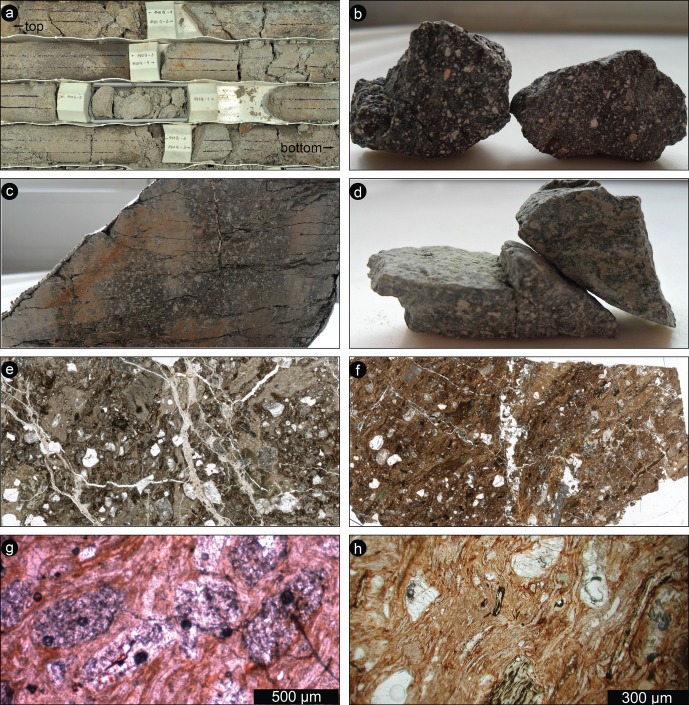Fig. 14.
Interval 390–423 mblb: Intermediate layer. a) Box containing part of the core runs 140 and 141 (approximately 416–420 mblb). The core width is 6 cm. The layer includes different lithologies, but the rock is highly altered, making classification difficult. b) Fragments of a layered blackish volcanic rock. Fragments 3 cm wide each. Sample 134Q1-W7-9 (399.6 mblb). c) Sample of a fractured volcanic rock, showing abundant whitish grains in a blackish matrix. Sample 6 cm wide. Sample 142Q2-W1-3 (420.6 mblb). d) Fragments of a greenish volcanic rock, which was classified as basalt by geochemistry. Fragments about 3 cm wide each. Sample 142Q3-W13-15 (420.9 mblb). e) Internal structure of one of the volcanic lithologies in this core section. Subrounded quartz grains are embedded in a brownish matrix, which includes probably pumice lapilli. The sample is crosscut by a network of open fractures. Thin section scan. Sample 137Q1-W5-7 (407.3 mblb). f) Rhyolitic sample with few subrounded quartz phenocrysts in a layered brownish matrix, which shows a strong layering/flow fabric. The sample is crosscut by open fractures, which are discordant with respect to the magmatic foliation. Picture 3 cm wide. Thin section scan. Sample 139Q6-W4-6 (414.8 mblb). g) Strong flow fabric in an andesitic volcanic rock, with abundant altered feldspar grains enveloped by the flowing matrix. Sample 130Q1W15-17 (395.4 mblb). Plane-polarized light microphotograph. h) Felsic volcanic rock with quartz, feldspar, and altered amphibole grains in a glassy welded matrix. Sample 139Q6-W4-6 (414.8 mblb). Plane-polarized light microphotograph.

